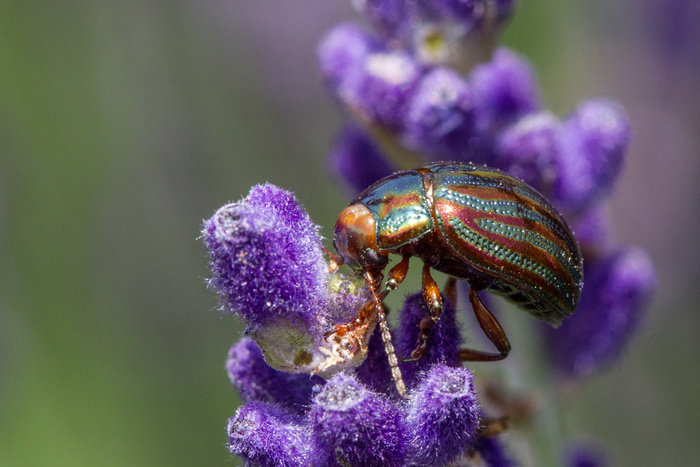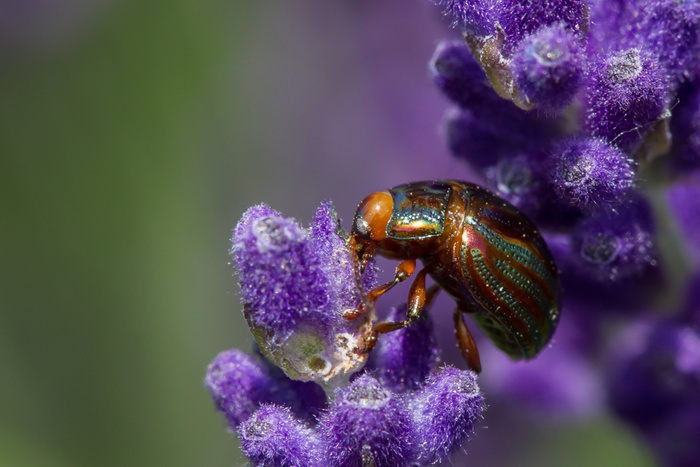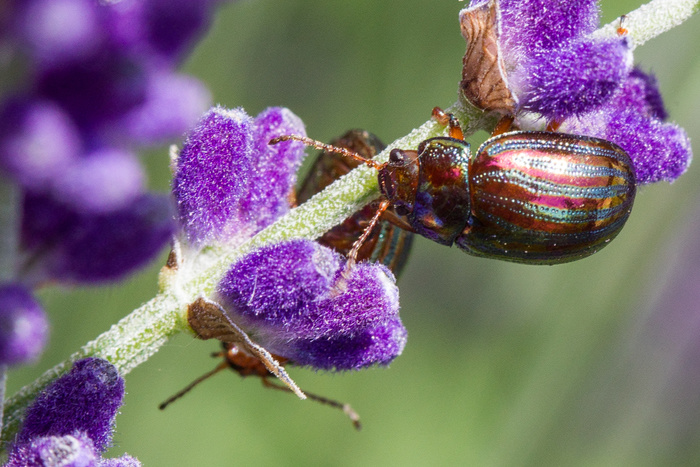Attractive Pest - Rosemary Leaf Beetle
25th June 2018
In: General News
Last Autumn, Peter Hunnable presented a rather attractive looking beastie to me, which now turns out to be a bit of a pest. The Rosemary Leaf Beetle has been spied chomping away on the Lavender Bushes outside the trading hut, and its staple food source is Rosemary,Sage, Thyme and Lavender.

Please find under excerpts from a BBC gardening article on their website in relation to this colourful fiend.
If the shoots tips of rosemary and lavender are turning brown and dying back it could be the sign of an infestation of rosemary leaf beetle. These small beetles feed on the new shoot tips causing them to die back. They're easy to spot because they have metallic green and purple stripes across their backs. Their larvae, which are slug-like and pale grey in colour with a dark stripe down the side, also cause damage by feeding on the shoots as they grow.

These attractive leaf beetles are an invasive species that first appeared in the UK in 1994. Since their introduction, they've been spreading steadily throughout the southern counties of England.
The adult beetles are around 1cm long with metallic green and purple stripes down their wing cases. They're usually found in groups on stems, or feeding on the new growth of plants. The larvae are small slug-like grubs which are usually found on the underside of leaves. They are light grey with horizontal dark stripes along their body.

Adult beetles are usually first seen in late spring, although they remain largely stationary on plants until later in the year. In late summer they'll begin to mate and lay eggs. Eggs are usually laid on the underside of leaves and are around 2mm in length. Larvae will hatch in about ten day's time and feed for a few weeks before dropping down to pupate below the soil surface. Adults may continue to mate during warmer winter periods, although this is rare.
If you are not interested in polluting your plot or plants with chemicals, the most effective treatment method is by hand.
Regular observation in late spring each year is essential to prevent infestations establishing. Removing adults and larvae by hand will help to reduce numbers. Shaking infested bushes over an old towel or sheet will enable large infestations to be collected and removed. Netting and fleeces can be used to stop adults moving between plants. There are currently no natural enemies commercially available to control rosemary leaf beetle.
Check plants on a weekly basis for signs of infestation and deal with them as soon as they appear.
www.bbc.co.uk/gardening/advice/pests